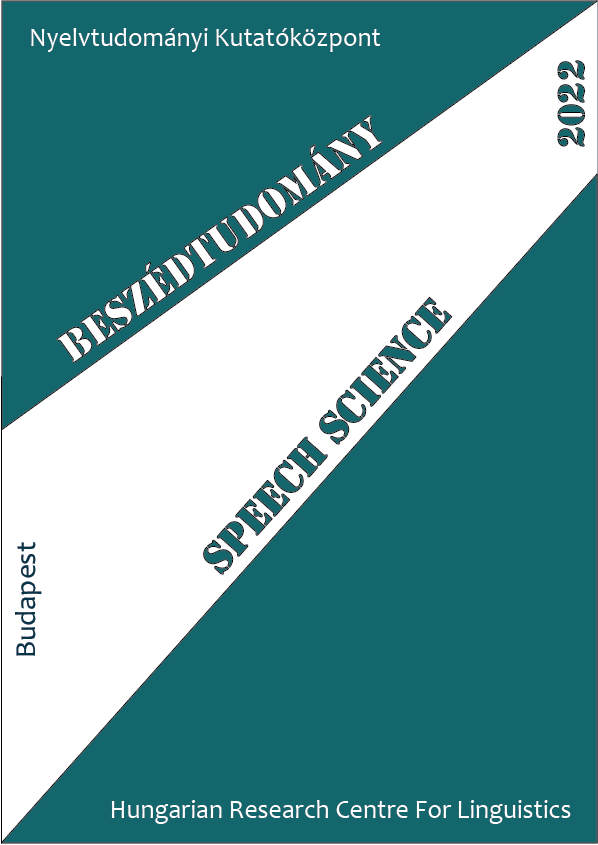Az önjavítási jelenségek magyar nyelvű spontán, baráti társalgásokban
Absztrakt
In spontaneous, everyday conversations, we can observe regularities and patterns that are repeatedly produced by the speakers during the conversation (Iványi, 2001). Such regularities can also be observed in the repair mechanism.
The study seeks to answer whether the ten repair operations described by Schegloff (2013), namely, replacing, inserting, parenthesizing, deleting, aborting, recycling, searching, sequence-jumping, reformatting and reordering, appear in Hungarian spontaneous conversations, and if so, how; and whether or not variations can be observed in each operation compared to Schegloff’s definitions. In addition, the study also examines the frequency of each repair operation. I researched this using spontaneous, casual everyday conversations.
The study revealed that replacing, inserting, parenthesizing, deleting, aborting, recycling, searching and sequence-jumping in Hungarian correspond to the English observations. There were, however, some discrepancies, which are the following: reformatting did not appear in my corpus. Furthermore, in the English delicate type of searching, the speaker deliberately delays a potentially offensive term (Schegloff, 2013), whereas in my example, the speaker searches for a word that is appropriate to the situation and does not produce an offensive, unpleasant term. In sequence-jumping, the current speaker interrupts the turn-constractional-unit by producing an inappropriate unit, thereby interrupting the action and exiting the sequence (Schegloff, 2013). In contrast, in my study, the turn of the current speaker is interrupted by his partners, the original speaker produces a response reaction to this, and thus he himself abandons the previous turn and exits the sequence. In the case of the reordering, it was suggested that the reordered form is an inherent recycling. However, in this case, the inserting required a change in word order, since the inserted element was in a focal position, and therefore the affix had to be reordered after the verb. The frequency order of repair operations is as follows: recycling, searching, replacing, inserting, aborting, parenthesizing, sequence-jumping, deleting and reordering.




